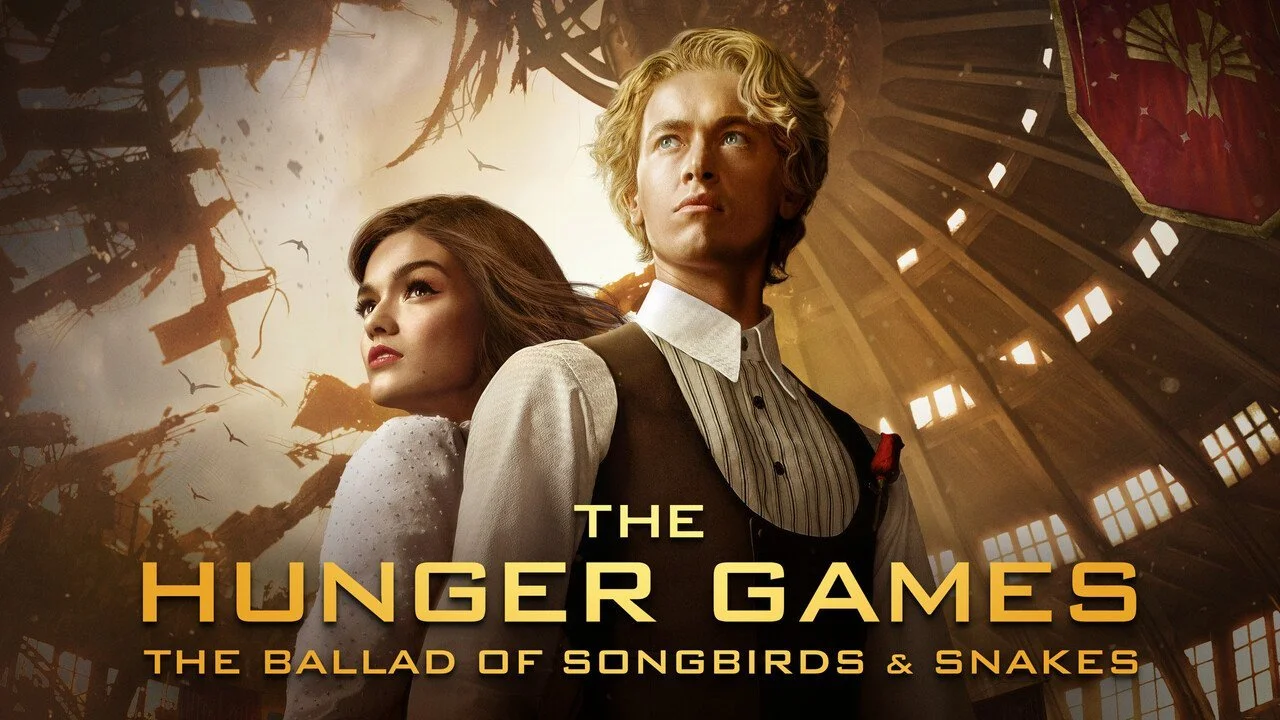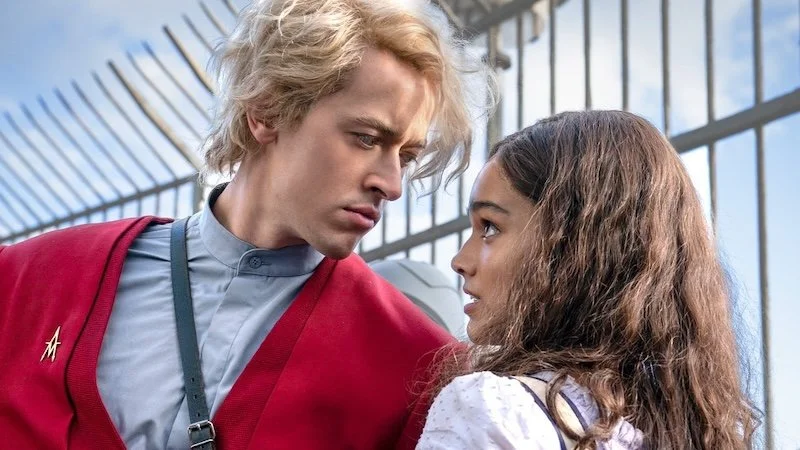Why Adapting 'The Hunger Games: A Ballad Of Songbirds And Snakes' Was A Bad Idea
Image Source: TV Insider
The Hunger Games: A Ballad of Songbirds and Snakes was nominated for a ‘Time Waster Remake or Sequel’ Award by the Alliance of Woman Film Journalists. This might be a bit strong, but the lukewarm, 6.8 rating on Rotten Tomatoes, and the fact that it’s the lowest-grossing movie in the franchise, by a considerable margin might suggest that this isn’t what Lionsgate Films were hoping for.
Suzanne Collins’ book debuted at #1 on the New York Times, USA Today, Wall Street Journal, and Publishers Weekly bestseller lists. The Hunger Games: A Ballad of Songbird and Snakes novel sold 500,000 copies in its first week, at the peak of Covid when many bookstores were not even open. The book was also nominated for Best Young Adult Fantasy & Science Fiction on Goodreads. So why did the movie adaptation fail to capitalize on this buzz?
RELATED:
The Snow POV Did Not Fall On Top
The Hunger Games: A Ballad of Songbird and Snakes was never going to work as a movie. The fundamental core of the novel is the Snow point of view, the POV. Many major events make Coryo look like he is being altruistic, only for his thoughts to reveal that he has a selfish intent. For example, when he rushes over to the dying Arachne Crane, the book clearly states this is purely for the camera, and he thinks she deserves her fate.
It's literally impossible to portray this in the movie, without extra dialogue or a fourth wall break. As a result, the version of Snow we got was more Hollywood. Shiny, nicer, and less complex. We lost the subtlety of the book as Snow recalled his environment (e.g. the red roped entrance to the arena, rather than the stiles) and people. The backstory about his father was also edited out, the audience never discovered the extent of his cruelty, or how the Snows lost their money in District 13’s supposed destruction. When Coryo is told he looks like his father at the end, we’ve no idea that’s a bad thing, or how deeply it affected Dean Casa Highbottom.
The first three Hunger Games books may have been in Katniss’ POV but she was a reasonably reliable narrator. Snow wasn’t. Katniss’ reactions (for the most part) matched her thoughts, and the reader trusted her. Snow was none of these things and that doesn’t translate well on screen without a mechanism to counter it, eg a voice-over.
Snow And Lucy Grey
Because we can’t see the inner workings of Snow’s mind, the movie turns Lucy and Snow into a standard romance, with a twist at the end. Susan Collins wrote this as so much more. Director, Francis Lawrence squeezed as much as he could into two hours and thirty-eight minutes, but in the book, these two met a lot more frequently. They were both bigger show-offs, doing it to gain favor with the audience (Lucy for food) rather than each other.
Snow uses the possessive language “my” and “mine” constantly when referring to Lucy. She was his victor, his prize. Collins showed his motivations in moving the relationship forward in print; jealousy or fear of the Capital, he saw her as an escape from his problems. But again, the film couldn’t do this without that Snow POV. Instead, we got a strange romance that made little sense on screen and had no chemistry.
Snow And Sejanus Plinth
Image Source: IGN
This relationship was completely glossed over, as the limited time of the film forced the writers to focus on Lucy and the arena. Snow’s time with Sejanus (and the rest of the Peacekeepers) in twelve is crucial to who he became, and his understanding of the games. That makes it more important to the story than Lucy. Suzanne Collins expertly built to the moment of betrayal, making the reader not only love Sejanus, but his Ma as well. Just at the point where he called Snow his brother, Coriolanus had him hanged. The mechanism, which is a big point of tension in the book, wasn’t even shown on film. It was reduced to a single line in the last scene. A footnote.
Is That Tigris?
Yes, The Hunger Games: A Ballad of Songbird and Snakes’ Tigris is the same one that appeared in the main trilogy. Book Tigris did desperate things to keep the family afloat (including sex work), but the movie turned her into a watery version of herself, a wide-eyed naive younger cousin, with victory rolls in her hair. This is so at odds with the tiger-striped rebel that she became in the later Hunger Games series, that it’s hard to reconcile the two.
The Scary Doctor Who Wasn’t Scary
Dr Gaul is another character who suffers due to time constraints. In the book, we get a better sense of the biologist, who we assume is the source of all the horrors in Katniss’ games. Snow considered her a genuine threat who could attack at any moment. In the movie, Viola Davis did her best to make her terrifying, but actions speak louder than words. Her storyline with Clemensia was cut in half, most of the mutants and many of her manipulations removed, making her essentially toothless. Snow’s a bigger menace than she was. It was hard to buy that he found her frightening after he killed three (potentially four) people.
To Conclude…
The only way this story was realistically going to work was as a short series, a five-parter on Amazon or Netflix. The book needed the same treatment that Netflix gave You; a show that allowed the inner workings of a psychotic and narcissistic character to still be endearing. This would have felt very different from the original movies, but The Hunger Games: A Ballad of Songbirds and Snakes is different. Lumping it into the same mould is what ultimately failed it.
READ NEXT:
Source(s): Collider Scholastic IMDb Rotten Tomatoes Goodreads















